- TaylorMade Stealth drivers feature 60x carbon-fiber faces
- Three models: Standard, Plus, HD
- Prices: starting at $579.99

With the introduction of the Stealth driver, TaylorMade is welcoming golfers to the beginning of the Age of the Carbonwood.
In one sense, the Stealth driver represents the culmination of a 20-year research and development effort described by TaylorMade as the “20-year journey.” In another, TaylorMade is just getting started with carbon-face technology.
In the language of innovation, TaylorMade sees Stealth as the start of a new S-curve. Metaphorically, the Stealth driver is the start of a new race where TaylorMade is already out of the blocks and its competitors are slogging their way through the qualifying heats. If it isn’t clear, in my version of this metaphor, “qualifying heats” represent titanium-faced drivers.
The bottom line is that, with the introduction of the Stealth Carbonwood, TaylorMade sees itself as not so much ahead of the curve but starting an entirely different one. While that may sound like a bit of a stretch for golfers accustomed to big promises and little in the way of actual gains, we’ve long stated that real gains are invariably the result of new materials or new manufacturing techniques. The TaylorMade Stealth driver includes heavy doses of both.
So, with the really big picture stuff out of the way, let’s see if we can answer some of your questions.
What (TF) is a Carbonwood?

Simply, a Carbonwood is a driver with a carbon-fiber face.
For TaylorMade, the Carbonwood is the evolution of the metalwood. It represents TaylorMade’s position that conventional titanium-faced drivers are obsolete (or damned near, anyway). To be sure, there’s still plenty of titanium to be found in the Stealth driver but what sets it apart from every other driver you’re going to see is its carbon-fiber face.
TaylorMade is so committed to the Carbonwood that it has said it will never make another titanium-faced driver. It’s so serious, in fact, that job titles are changing. Guys have literally had the Metalwood in their job tiles changed to Carbonwood.
Perhaps that’s odd. Actually, it’s definitely odd but it illustrates the commitment and confidence TaylorMade has in carbon-faced drivers now and moving forward.

Not the First Carbonwood
To be clear, TaylorMade isn’t claiming it’s the first to go to market with a carbon-fiber face driver. Callaway did it with the C4. And while that was an explosive failure, it likely provided at least a hint of inspiration for TaylorMade’s foray into the space.
The Stealth isn’t even TaylorMade’s first carbon-faced driver. The 2013 Japanese market Gloire Reserve driver holds that distinction.
So, in a sense, we’ve been here before. The Gloire Reserve wasn’t what you’d call a game-changer but TaylorMade believes the technology has advanced to the point where not only can carbon-faced drivers succeed at the mass-market level but, from a performance perspective, they can dominate.
The realities of all this are TBD, of course, but the Stealth driver will undoubtedly prove to be the boldest golf product to hit shelves in 2022.

Why Is it Called TaylorMade Stealth?
A driver with a bright red face isn’t going to fly under the radar or sneak up on anybody so, in that respect, the Stealth name may seem a bit odd.
The name is less about the driver itself and more about what it represents. “Stealth” is meant to convey the fact that despite a long and storied history in the golf equipment world, TaylorMade can still innovate in ways that surprise. Sure, nothing would have been more surprising than calling the new driver Jet Speed II (Roman numerals are even more surprising still) but Stealth isn’t bad, I suppose.
Why Does the TaylorMade Stealth Driver Have a Carbon-Fiber Face?
As you can probably guess, TaylorMade says carbon fiber is stronger, lighter and faster than titanium. Not wholly unrelated: it’s also more customizable and, for now anyway, unique to TaylorMade.
Let’s start with those last bits first.
While titanium has improved over the years—so much so that, despite 20 years of investment, TaylorMade nearly scrapped the Carbonwood project—the company feels the industry’s go-to face material has reached the mature phase of its innovation curve. Titanium will continue to be viable but TaylorMade believes that where opportunities for further advancements are concerned, titanium has reached its ceiling.

Conversely, TaylorMade believes it’s getting in on the ground floor with carbon-fiber faces. There’s nowhere to go but up.
With that in mind, it’s fair to say the gap between where titanium- and carbon-face technology is today isn’t massive but TaylorMade believes it’s going to widen rapidly. As the first ones out of the starting blocks with the most significant material change in more than two decades, it has a sizeable technology lead on its competitors.
Again, the realities of carbon-fiber face performance are TBD but it’s a fascinating story and TaylorMade is the only one telling it.
With that out of the way, let’s break down the performance advantages of TaylorMade Stealth drivers’ carbon-fiber face.
Carbon Fiber is Lighter
By the numbers, the Stealth’s carbon-fiber face is 40-percent lighter than equivalent titanium. This is typically where I’d tell you about how all that weight savings was positioned low and back and so high you get higher launch, more forgiveness, and yada yada yada.
Nah. This time we need to think differently.
The reality check here is that this is really rev 1 or maybe rev 1.b (if you count Gloire Reserve) for TaylorMade into the world of carbon-fiber faces. Remember, this is only the beginning of the Carbonwood era and TaylorMade is still learning how to optimize and trim weight from the structures that support the carbon-fiber face. It’s reasonable to assume there’s a bit of over-engineering to ensure everything stays in place and so, when you factor in the ledges that support the face and the bonding agents (glue) that hold everything together, the actual weight savings nets out at four grams.
To be sure, there’s isn’t anybody in an R&D department anywhere in Carlsbad (or the greater Phoenix area) that wouldn’t love four grams of discretionary weight to play with but the gains aren’t nearly as significant as that 40-percent number suggests on its own.
So again, the point is that TaylorMade believes it’s just scratching the surface of what’s possible with carbon fiber. The expectation is that the gap between carbon and titanium will widen in the coming years.
So, if it’s not all about weight savings, what’s the big deal?

Carbon Fiber is Faster
Because the face itself is lighter (and the material properties are fundamentally different), the face flexes more. Ultimately, the introduction of carbon fiber changes the relationship between the face and body such that the face flexes more at impact while the supporting titanium structures don’t deflect nearly as much. TaylorMade says the relative stiffening of the body returns more energy to the golf ball.
Speed stories always raise eyebrows when it comes to equipment rules and so, with respect to the speed police at the USGA, there are two things we need to keep in mind.
The first is that COR (the old standard for controlling speed) and CT (the new standard) aren’t exactly correlated. Some would say they’re loosely correlated at best. The bottom line is that, at any given CT, you will find higher COR drivers and lower COR drivers. In that respect, the CT limit isn’t an absolute cap on ball speed; it’s more of a ballpark construct.
The CT rule wasn’t enacted to further cap speed. CT superseded COR as a means to make conformance testing repeatable and possible “in the field.” The ball cannons necessary for COR testing make consistent setup challenging and they’re not particularly portable.
The second piece of relevant info is that the USGA pendulum test for CT was designed with titanium-faced drivers in mind. A change in materials has the potential to further exploit the gap between CT and COR. That’s not to say TaylorMade has gone nuts with speed and it’s most certainly choosing its words with Tiger Woods-like precision.
The company says it’s excited about the speed gains it’s seeing with the Stealth driver but maintains it’s still on the good side of the trend line between CT and COR.

All we can really take from that is that the Stealth driver is conforming and also that TaylorMade believes it will prove faster than anything else on the market this year.
To that end, TaylorMade is making a ball speed claim. The number that’s fit to print as far as TaylorMade’s legal department is concerned is 1.1 mph faster than the SIM2. Keep in mind that’s for golfers who swing +/- 105 mph. That puts us somewhere between 2.5 and 3.0 yards.
Most would agree that three yards isn’t earth-shattering—and it’s a whole other discussion about whether one additional stride down the fairway is worth $600—but, in the larger context, that puts the ball speed gains in the jump from SIM2 to TaylorMade Stealth driver at 13 times what they were from M5 and to the first SIM.
And again, 1.1 mph is the number TaylorMade’s legal is comfortable with. The safe number is always the lowest number.
Anecdotally, while it won’t make any promises, TaylorMade has seen players gain three to five mph or more and it’s particularly excited about what gains it could see with its PGA TOUR staff.
On the high end, that’s about five big steps farther down the fairway.
We don’t yet know how wide the chasm between marketing and reality is but, if the gains are real, they should come through during Most Wanted testing. I’ll talk a bit more about it in a bit but, anecdotally, there may be something to it.

Carbon Fiber is Stronger
Inherently, we all know carbon fiber is a strong material. It’s been used in various parts of drivers for years. They build airplanes and spaceships out of the stuff.
That said, most of us don’t think of carbon fiber as an impact material. As golfers, we’ve come to understand that bad things happen when carbon-fiber shafts make direct contact with just about anything at speed.
I’ve hit the TaylorMade Stealth driver. The TaylorMade guys have walked me through it but, admittedly, it’s still tough to wrap my head around the idea that a carbon-fiber driver could be as durable as a titanium one.
Traditional uses of carbon fiber are strong in different ways and, to be sure, some things have to be done to make carbon fiber viable in an impact scenario, like what happens when you hit a golf ball with the Stealth driver.
We’ll cover that in the 60x section but the bottom line is there’s no reason to think the carbon-fiber face of the TaylorMade Stealth driver won’t hold up as well as anything else. And that’s mostly because TaylorMade presumably isn’t stupid enough to market a driver with a face that breaks after a couple hundred swings.
Tiger already played the Stealth in the PNC Championship and it won’t be long before TaylorMade staffers who swing even harder than Tiger put it in play. I think we’re probably OK here.

Carbon Fiber Faces are More Consistent
There’s not necessarily any magic in the material that makes it more consistent but TaylorMade says the manufacturing process used to make the face creates less variation from part to part than with titanium. The bulge and roll of the face as well as TaylorMade technologies like Twist Face and Inverted Cone are baked into the carbon-fiber layering process. And since the face is bonded (glued) to the body, there are no welds to polish (grind) away.
As we’ve discussed in our stories about COBRA’s milled-face drivers, the polishing process can lead to variation in bulge and roll and even impact CT.
Also part of the consistency story, TaylorMade says carbon fiber is less susceptible to deformation over time. That means the faces of the TaylorMade Stealth driver won’t flatten like some titanium faces do. The carbon-fiber face manufacturing process also results in more consistent CT and is less prone to CT creep (faces getting hotter and exceeding USGA limits) over time.
The added consistency eliminates the need for TaylorMade’s speed injection process, makes life easier for Tour players and, to the benefit of everyone, allows TaylorMade to push its CT targets a bit higher while yielding tighter tolerances.
In the real world, TaylorMade believes that, even without bumping up MOI, its carbon-fiber faces will yield consistent ball speeds across the face that will rival anything on the market.

Carbon-Fiber Faces are More Customizable
Finally, keep in mind that innovation isn’t strictly about performance. While TaylorMade asserts that the performance upside of carbonwoods (including the Stealth driver) are substantial, the customization options it allows for may be nearly as exciting.
I’ll lay it out in more detail when we cover the MyStealth program but, for golfers who want the ultimate in driver customization, I’ll point out that you can customize the face color of the TaylorMade Stealth driver. You can’t do that with titanium.
It’s not offered this year but that honeycomb pattern on the face is really just a decal. There’s no reason why it couldn’t be swapped to further customize the driver.
Because of the way the face is made, it’s not out of the realm of possibility that the future could include a customization option to meet the specific performance needs of an individual golfer. It could be possible to, for example, shift the inverted cone slightly towards the toe. I can’t say it will happen but it would be much easier to do with carbon fiber than with titanium.
With the whys out of the way, let’s look at some of the finer points of the TaylorMade Stealth driver story.
Why Does it Say 60x Carbon Fiber on the Face of the TaylorMade Stealth Driver?
The reason it’s on the face is basically Golf Club Marketing 101. If you have a technology, even if it’s barely technology, you absolutely have to document it somewhere on the club itself. It’s why so many irons are stamped with Tungsten and Forged and why Callaway driver cosmetics include references to AI and Jailbreak.
If the technology itself isn’t visible, that’s all the more reason to call attention to it. Hence, printing 60x Carbon Fiber on a face you’ve already colored red.
60x Carbon Fiber is a reference to the fact that the face of the TaylorMade Stealth driver is made up of 60 individual layers of carbon fiber. By altering the orientation of individual layers, TaylorMade is able to strengthen the material and optimize performance. In addition to the layers that provide that structural strength, “snowflake” layers are used to slowly build up TaylorMade’s sweet spot-enhancing Inverted Cone Technology. Twist Face is baked into the layering design as well.

The 60x carbon-fiber face is noticeably thicker than a titanium face. Thicker typically isn’t desirable but, even with all those layers, the Stealth’s 60x carbon-fiber face is significantly lighter and, TaylorMade says, more responsive. All of this brings us back to stronger and faster.
The carbon-fiber layers are covered with a thin scrim layer that contains the graphic pattern (it’s how TaylorMade can customize color). Finally, a polyurethane nanotexture coating which, not for nothing, is probably the most important part of all of this, is applied to the face.
Without the coating, the TaylorMade Stealth driver and its 60x carbon-fiber face isn’t viable.
TaylorMade Stealth Driver – Nanotexture Coating

The nanotexture coating (polyurethane blend) is responsible for the semi-sticky tactile experience provided by the TaylorMade Stealth driver face. Its purpose is to provide protection for the underlying carbon fiber and create consistent spin in any condition.
The protection part is simple. The nanotexture coating prevents the ball from making direct contact with the composite. Moving some of the impact strain helps ensure the Stealth driver can withstand thousands of shots—the same as any other driver. The nanotexture also contains the grooves and the bit of additional texture that helps maintain spin performance in any condition.
Early in the carbon-fiber face design process—we’re talking 2003—TaylorMade figured out that for composite to be viable as a face material, it would need some sort of protective cap. The original iteration used a thin layer of titanium.
How’s that for out-of-the-box thinking?
The titanium preserved the integrity of the face but it slowed it down to the point that it was slower than … well … titanium.
Golf clap, guys. Not ideal.

Along the way, TaylorMade also figured out that untreated carbon fiber wasn’t particularly great at providing consistent spin properties in changing conditions.
To put some numbers on it, when bare carbon-fiber faces get wet, spin drops by about 2,000 rpm. Even for those of us who need to drop some spin, that’s not exactly desirable. It’s also the kind of performance variation that the USGA frowns upon.
So, in the midst of TaylorMade’s 20-year journey to what ultimately became the Stealth driver, there was a separate three-year journey to find a material and groove design that could preserve the integrity and the spin properties of the face.
After a series of good ideas turned failures, they found a polyurethane coating and a molded groove design that would become nanotexture.
To create TaylorMade’s nanotexture, polyurethane is injected into a mold that forms the grooves and creates a sawtooth texture (it’s a bit like groove-in-groove wedge designs) before being joined to the face. All in, the coating is fractions of a millimeter thick and, while the carbon face is definitely a cool story, the nanotexture is a good bit of the reason why it works.
Three Stealth Driver Models
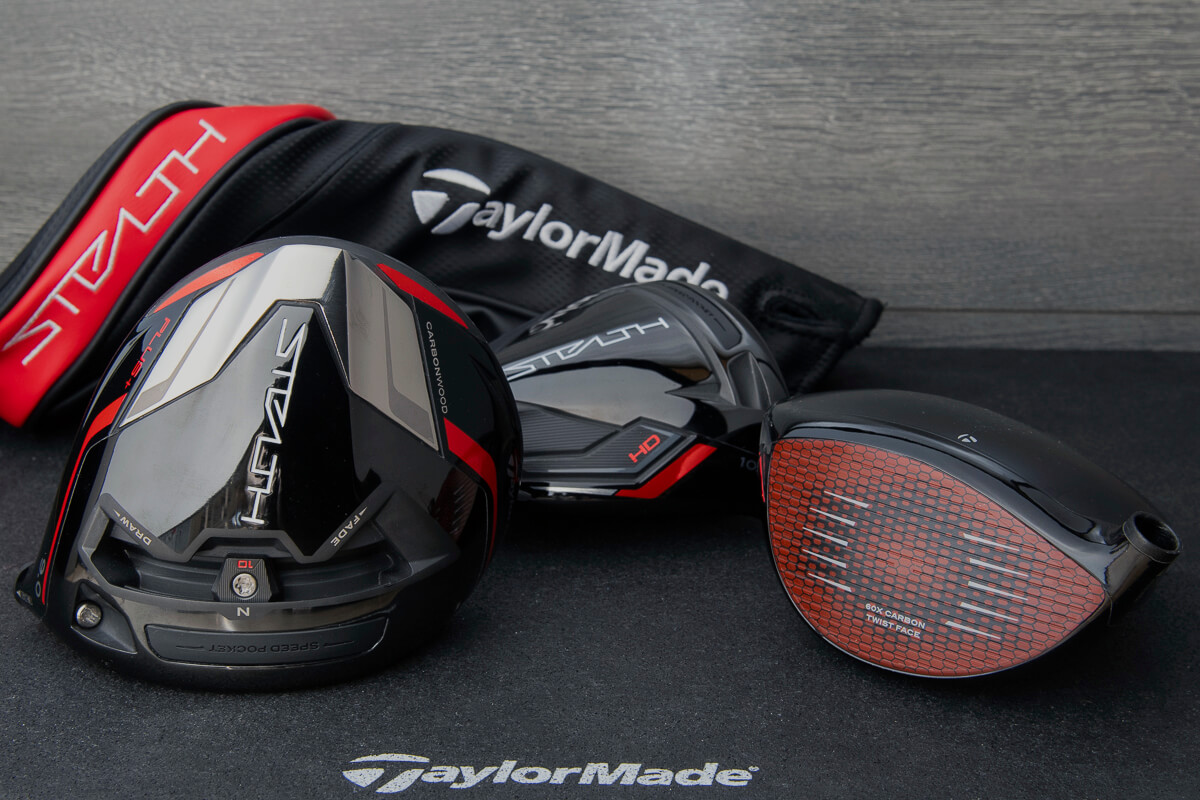
There are three drivers in the TaylorMade Stealth lineup and all offer 60x carbon-fiber faces (with nanotexture). In addition to the carbon-fiber faces, notable updates include a face that’s 20-percent larger. For some golfers, that can be confidence-inspiring and bigger faces typically help with off-center ball-speed retention.
Typically, a larger face would bring with it an aerodynamic penalty. Realistically, nobody at this level is particularly bad at aero and, unless you’re swinging over 100 mph, you probably shouldn’t worry too much about it, anyway. The key point here is that, despite the large faces, some shaping changes make the aerodynamics of the TaylorMade Stealth driver a bit more efficient than SIM2.
Taking the good with the bad, MOI (a conventional measure of forgiveness) is down relative to SIM2 (it’s closer to the original SIM). More relevant is the reality that TaylorMade has never pushed the USGA’s MOI limits and has never shown any particular interest in doing so. In recent years, it has positioned itself as a mid-MOI company and if that has worked out well for you, it’s almost certainly not worth sweating a couple of hundred MOI points either way.
Stealth Plus +

The Stealth Plus + (the “+” is silent, I think) is the flagship model in the TaylorMade Stealth lineup. The removal of the aluminum ring found in SIM2 and some changes to the shape of the driver allowed TaylorMade to reintroduce 10-grams worth of movable weight.
You had to know TaylorMade wasn’t going to keep sliding weights out of the lineup for long.
The Stealth Plus is the lowest spinning of the three Stealth models. From what we’ve seen, it’s probably not going to be the absolute lowest-spinning driver on the market but it will definitely qualify as a low-spin driver, especially with an eight-degree head in the mix.
Stealth
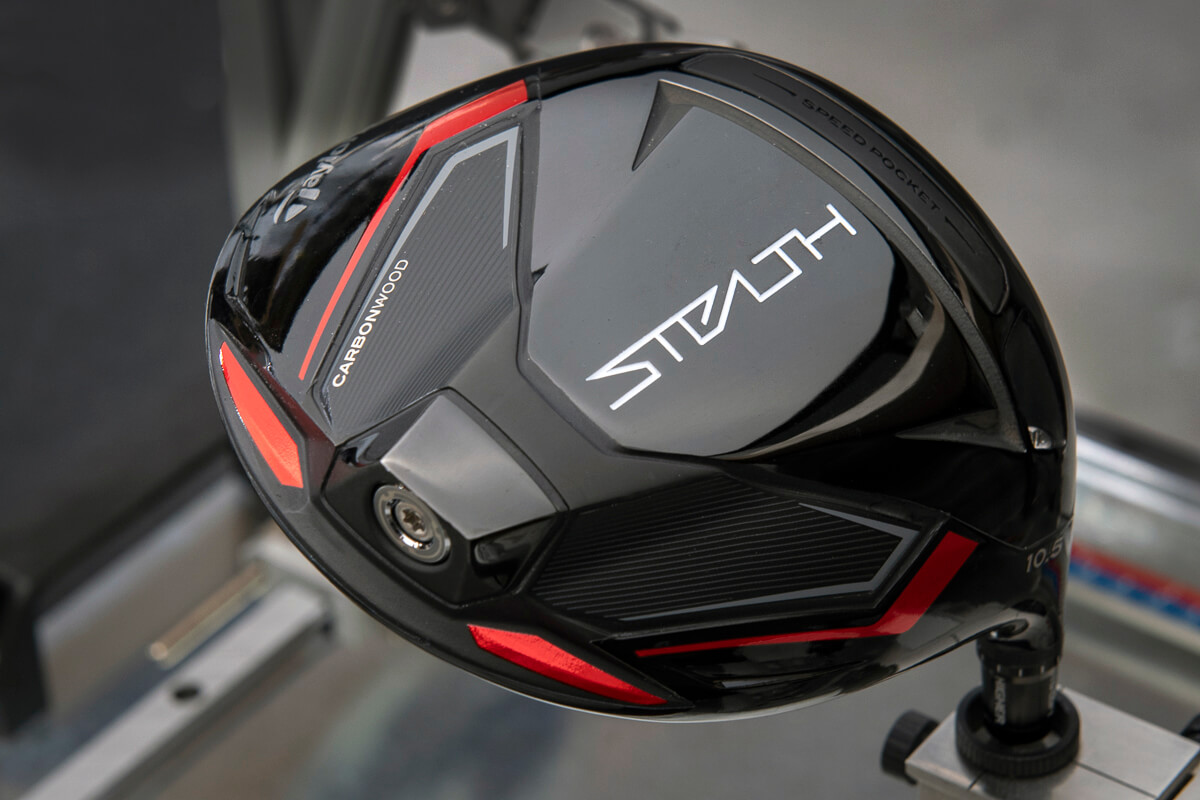
As you’d expect from the standard offering, it’s designed with the middle of the market in mind. While the movable weight of the Stealth Plus is going to attract people, the standard Stealth is going to fit more golfers.
You can expect the standard Taylormade Stealth to launch higher than the Stealth Plus and spin about 200 to 300 rpm more. It’s a bit more forgiving as well though, as noted, you shouldn’t harbor any illusions about extreme forgiveness. TaylorMade will put the playability of the Stealth up against anything but understand it’s not designed to go toe to toe in an MOI battle with the “MAX” drivers on the market.
There’s invariably a tradeoff between high MOI and peak ball speed and TaylorMade is always going to favor the latter.
Stealth HD
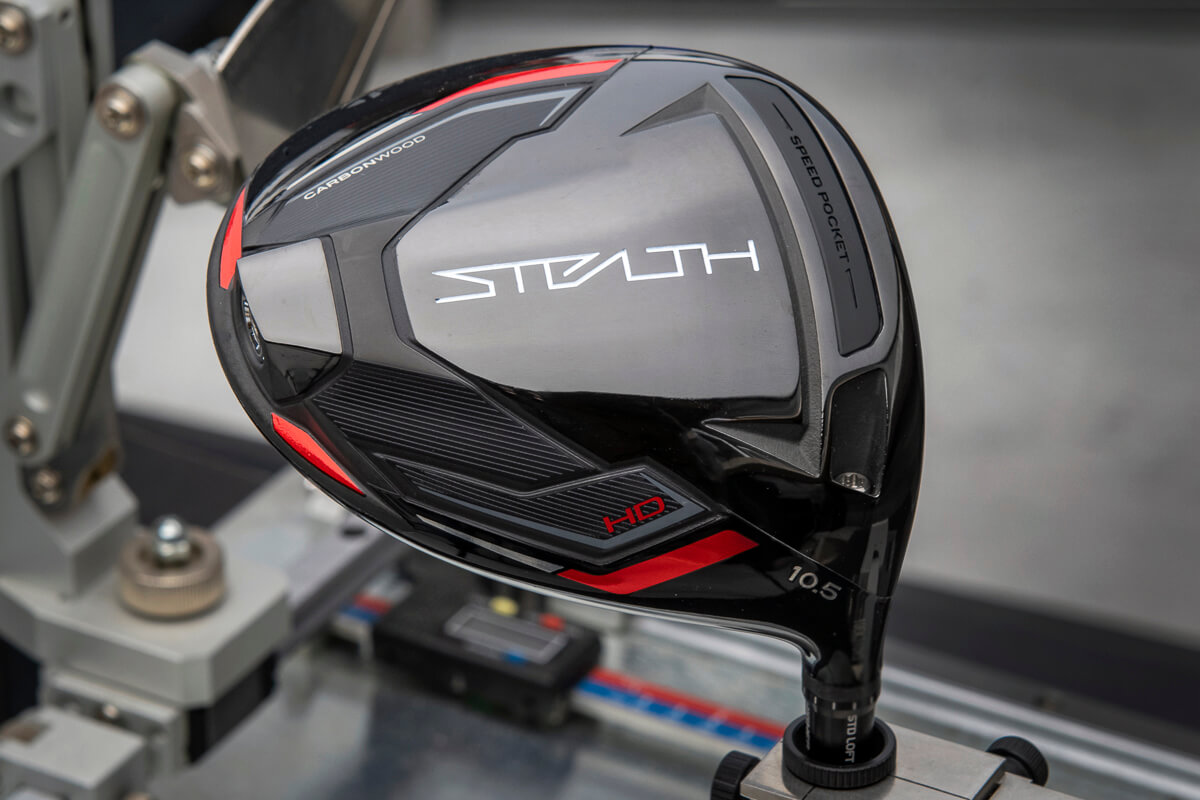
The HD in Stealth HD stands for High Draw which should tell you everything you need to know about the intent of the design. But just in case, let me spell it out. The HD is the draw-biased model in the TaylorMade Stealth driver family. It’s described as offering high launch with mid spin. You should expect it to spin a bit more than the standard Stealth and, of course, you get the baked-in draw bias for those looking to go less right … or right less often.
The Stealth HD defies convention in that, despite the draw bias, it has the highest MOI of the three Stealth models. While the company is constantly tweaking and tuning, its draw-biased models typically haven’t been as aggressively weighted as things like PING’s SFT models.
Typically, that manifests as a more conventional-looking (and playing) draw-biased clubs. Bottom line: if you’re looking for added forgiveness without an excessive amount of draw bias, the TaylorMade Stealth HD driver is probably worth a look.




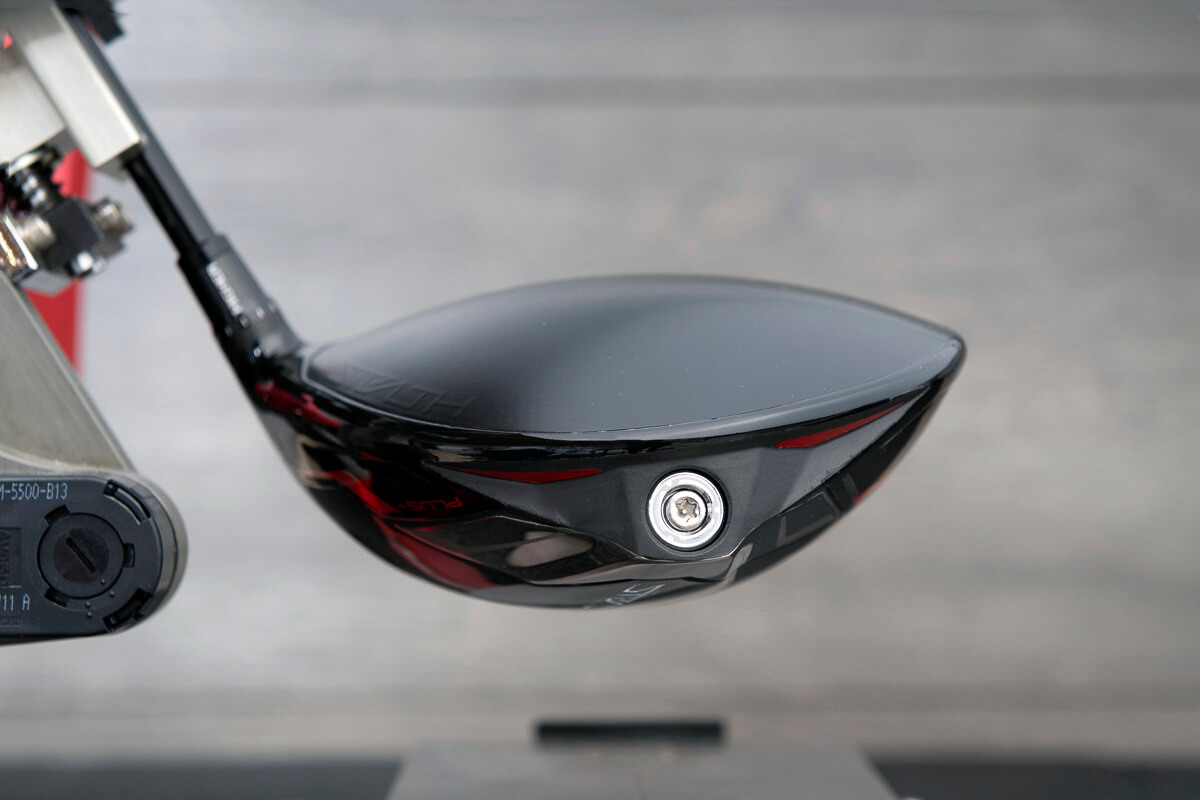











TaylorMade Stealth – What You Really Want to Know
You’ve made it this far so it’s time to get to what will almost certainly prove to be the most commonly asked questions about the TaylorMade Stealth drivers.
How does the TaylorMade Stealth driver sound?
Past experience with carbon-fiber drivers, especially ones with unique design attributes, haven’t always been great. With that in mind, it’s fair to say that we initially set the bar for the sound of the TaylorMade Stealth driver as simply passable.
If it wasn’t totally awful, it would be fine.
With our first swings, I think the entire staff was looking for something to nitpick. Maybe there was a little crunch to it. Maybe I just wanted there to be. A couple more swings and we realized that, even with the carbon-fiber face, the TaylorMade Stealth feels like a driver—and a pleasant feeling one at that.
At face value, that would seem to defy expectations but thinking it through logically, there’s still a lot of titanium in the Stealth. A good bit of what we experience from a sound and feel perspective is driven by the body of the driver so it’s worth reiterating that the chassis of the Stealth is titanium and so it’s not particularly surprising that it doesn’t sound much different than other titanium-body drivers.
For what it’s worth, in TaylorMade’s testing, the sound and feel of the Stealth was preferred over both SIM and SIM 2 and it’s notable that, so far anyway, there hasn’t been any pushback from its Tour staff.
Is the sound of the TaylorMade Stealth driver surprisingly good? Yeah but it probably shouldn’t be all that surprising.
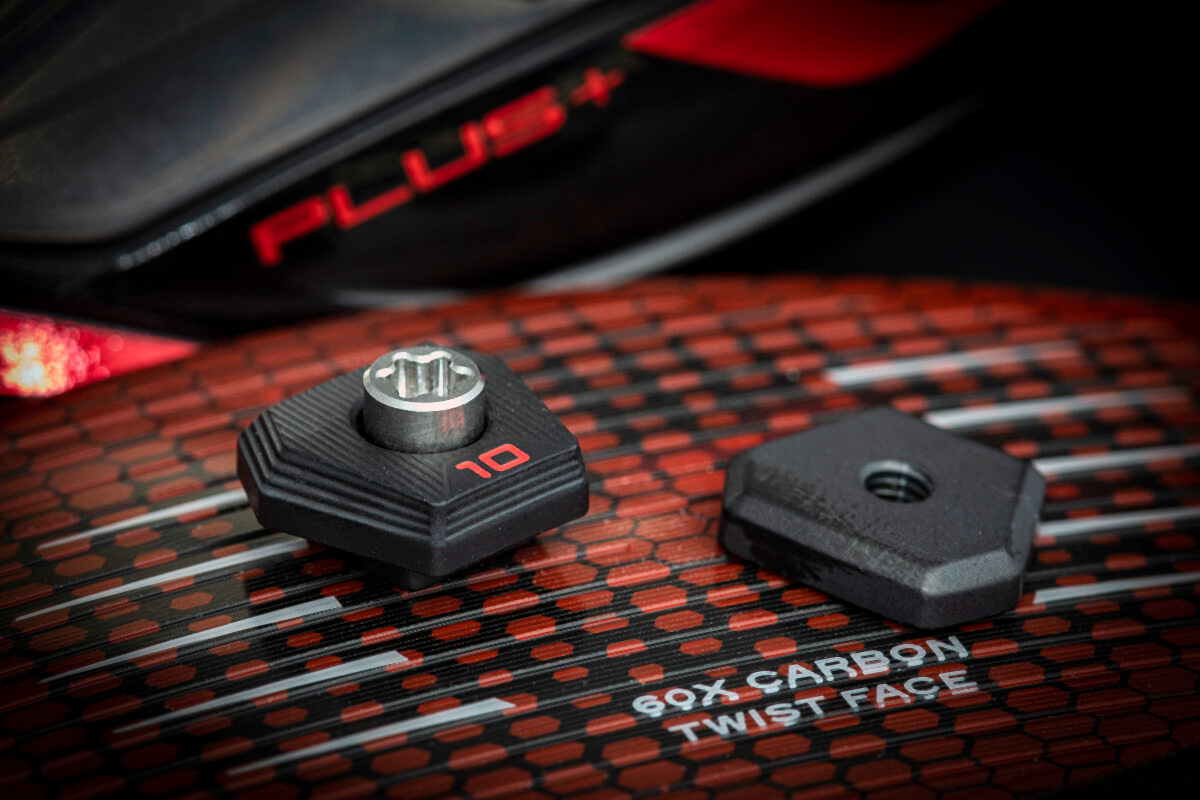
How does the TaylorMade Stealth driver perform?
With the pool of golfers that comes with Most Wanted testing, we’ll have a much better sense of how Stealth stacks up. Out of the gate, in our range session with Trackman and TaylorMade TP5 balls, we saw exceptional results.
These days, I typically hover around 158 mph ball speed. With the Stealth Plus, I repeatedly hit 162 and change (a personal best for me). Obvious (though not massive) mishits dipped to 158 mph or so while the total trash typically stayed above 150.
Our Harry Nodwell plays professionally. He’s typically in the 178 mph range but he repeatedly and consistently broke 180, including a personal best of 181.4.
There appears to be real juice in the Stealth.
The fine print here is that TaylorMade’s stock shafts are ¼-inch longer than what I play, a bit longer still than what Harry plays (and neither of us were hitting TaylorMade’s stock shafts). It’s your textbook “your mileage may vary” situation—and by no means is this the final word—but it’s fair to say our entire staff came away impressed and without any lingering reservations over that 60x, nanotexture-coated, carbon-fiber face.
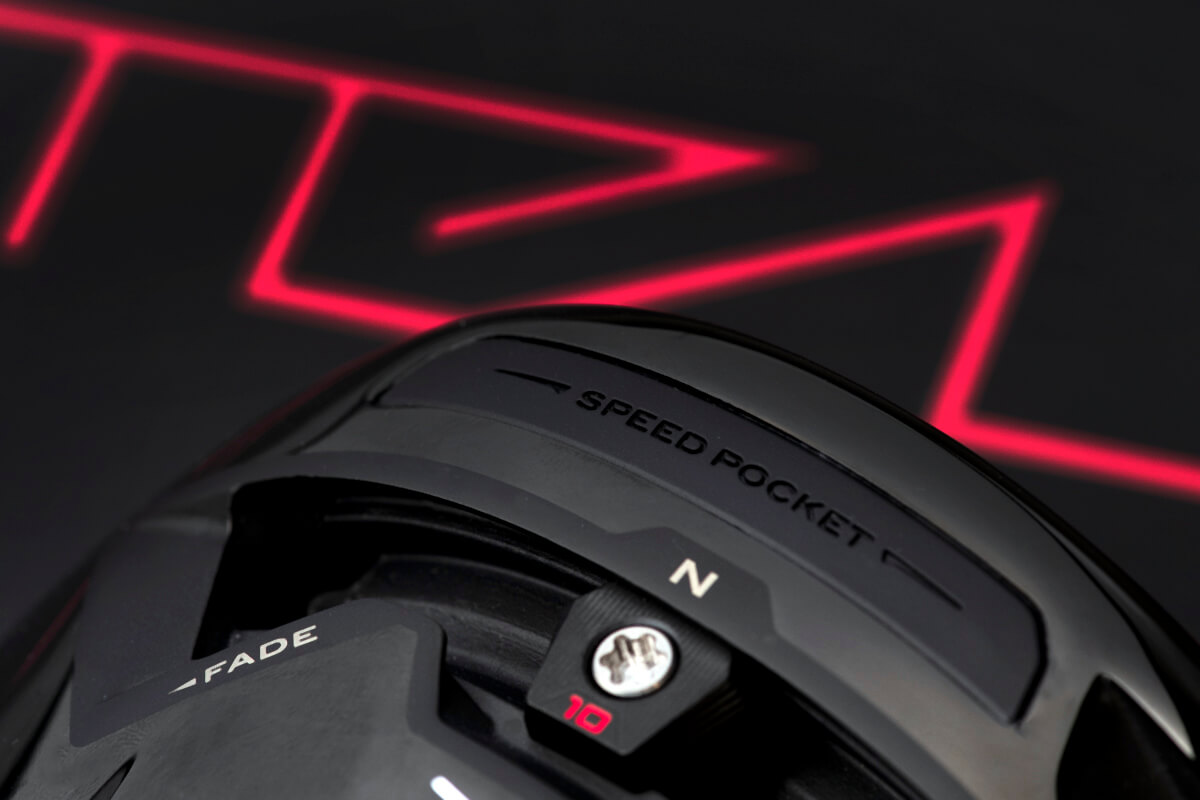
How Will All of This Play Out?
It’s an absolute given that the TaylorMade Stealth will be the top-selling driver in 2022. The only question is by how much.
The company is less focused on market share numbers than it was when it was adidas-owned but some inside the company believe 50 percent of the metalwood market is within reach. Nobody has sniffed those kind of numbers since the original Rocketballz. Given the parity in the market, that might be a bit high but what is certain is that TaylorMade will capture 100 percent of the Carbonwood market.
It remains to be seen how long the exclusivity will last.
Is this simply a TaylorMade story or will others develop carbon-fiber faces?
If the advantages prove demonstrable, it won’t take long for others to enter the market. TaylorMade feels like it has a two- to three-year head start but that’s purely speculative.
It’s also possible that titanium remains every bit as viable as it was yesterday or that TaylorMade had misread the tea leaves and others find opportunities to get more out of what is, if nothing else, an exceptionally dependable material.

The third option is unlikely but what if the success (i.e., failure) of Stealth Carbonwood mirrors that of the Callaway C4? TaylorMade thinks that’s highly unlikely but, if consumers don’t respond or there are widespread failures, this could all go bottom-up and send TaylorMade running back to titanium with its tail tucked. That’s the worst-case scenario for a company that says it will never make another titanium-faced driver and likely the reason why it has done everything it can to ensure it doesn’t happen.
The safe money is on a combination of scenarios one and two. Golf is a copycat industry and while some will no doubt argue TaylorMade is already copying Callaway (and itself), it stands to reason somebody else will offer a carbon face. Sometimes it’s worth validating the other guy’s tech if it makes your stuff better.
Who that might be remains to be seen but for now TaylorMade enjoys a comfortable lead in the Carbonwood race—even if it’s the only one running.
Specs, Pricing and Availability

The TaylorMade Stealth Plus driver has a retail price of $599.99 and is available in eight, nine and 10.5 degrees. Stock shaft offerings include the Project X HZRDUS Smoke RDX Red 60 and Mitsubishi Kai’li White 60. Additional options are available at no extra cost. The stock grip is a Lamkin Crossline.
The Stealth and Stealth HD drivers retail for $579.99 and are available in nine, 10.5 and 12 degrees. Stock shaft offerings include a Fujikura Ventus* (non-Velocore) Red 5 and Aldila Ascent 60. A Fujikura Air Speeder is also offered in the Stealth HD. The stock grip is a Lamkin Crossline.
The TaylorMade Stealth women’s offerings ($579.99) is available in 10.5 and 12 degrees and comes stock with an Aldila Ascent 45 shaft and a Lamkin Ladies Sonar grip. An array of custom components, including shafts and grips, is available as well.
RANKED: Best Drivers In Golf ????
Looking for which drivers performed best?
MyStealth
TaylorMade will again offer personalization through the MyStealth program. Through MyStealth, golfers can customize multiple aspects of their driver:
- Face Color – Six color options include red, green, yellow, blue, orange, grey
- Body Color – Two color options include black and chalk (right hand only)
- Crown Finish – Gloss or matte with or without the TaylorMade T-logo
- Sole Decal Color – Eight color options include blue, black, red, orange, green, gold, pale blue, volt
- Head Covers – Mono or color

MyStealth is offered in the Stealth Plus model only. Pre-orders begin on Jan. 4 at TaylorMadeGolf.com as well as select retail locations.
Retail price for MyStealth drivers is $699.99.
Full retail availability for the entire TaylorMade Stealth driver lineup (including MyStealth) begins Feb. 4.
For more information, visit TaylorMadeGolf.com.















Donald Beck
2 years ago
I just tested this driver with a TM fitting guy on our local driving range. I hit both the standard and HD. Didn’t notice much of a difference in ball flight or distance. I was supposed to get the Trackman numbers but haven’t received the data as yet. My impression was it wasn’t any longer than my gamer, sounded like a dull thud, and I couldn’t feel where I was hitting it on the face. I mentioned “dull thud” before I read Darren’s take above and sorry if this sounds like Nike marketing, but I believe most people would call it a dull thud. I will stick with my Epic. I wouldn’t buy the first generation of a new thing anyway, that usually doesn’t work out.